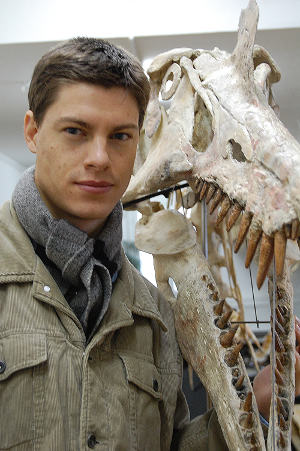Using AI to control energy for indoor agriculture
30 September 2024
Published online 14 January 2016
Scientists identify the jaw mechanics that allowed dinosaurs to feast on fish.

© Octávio Mateus
The fossils reveal how Spinosaurus aegyptiacus and Sigilmassasaurus brevicollis, two species of semiaquatic dinosaurs, thrived mostly by preying on fish as now extinct flying reptiles did and like present-day pelicans, they say.
For the first time, Christophe Hendrickx and his teammates from Universidade Nova de Lisboa, Portugal, and CNRS, PSL Research University, France, have linked this fish-eating prowess to the specially structured skull bones of these dinosaurs. They found that the specific shape of mandibular condyles in the skull bones formed a particular articulation between the lower jaw and the skull1.
Such articulation, the scientists say, widened the dinosaurs’ pharynx, allowing them to swallow large preys such as fish. This jaw mechanics and swallowing habit are similar to pelicans.
The dinosaurs possibly ate plant-eating dinosaurs, crocodiles and turtles, abundantly available in the Kem Kem environment, the researchers say.
“With crocodile-like skull measuring more than 120 cm, conical teeth and a sail-like structure on their back, these dinosaurs carved their specialized niches among other meat-eating dinosaurs,” says Hendrickx, the lead author of the study.
doi:10.1038/nmiddleeast.2016.3
Stay connected: